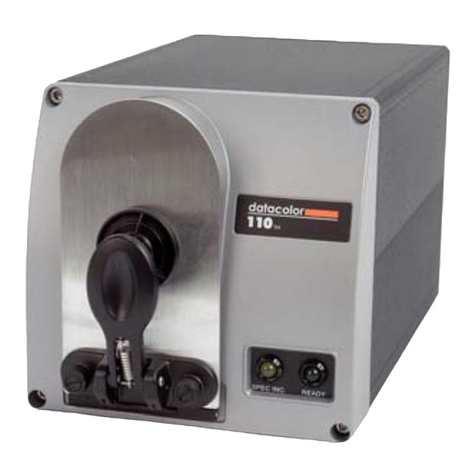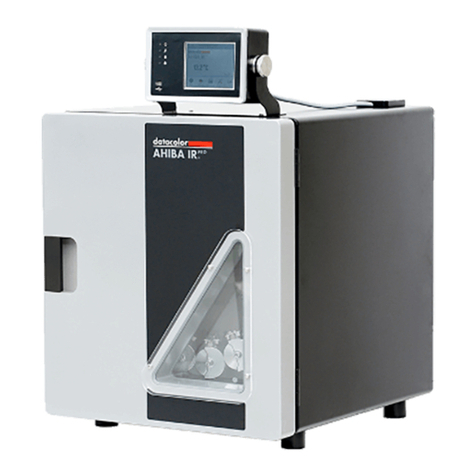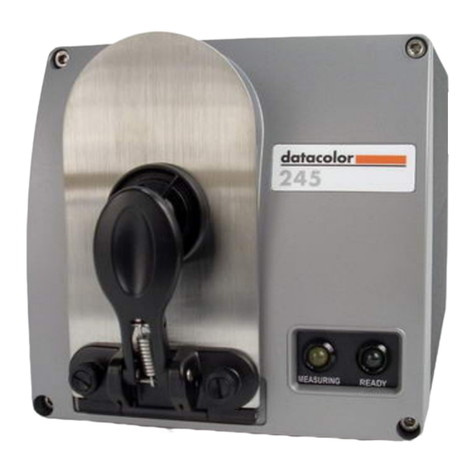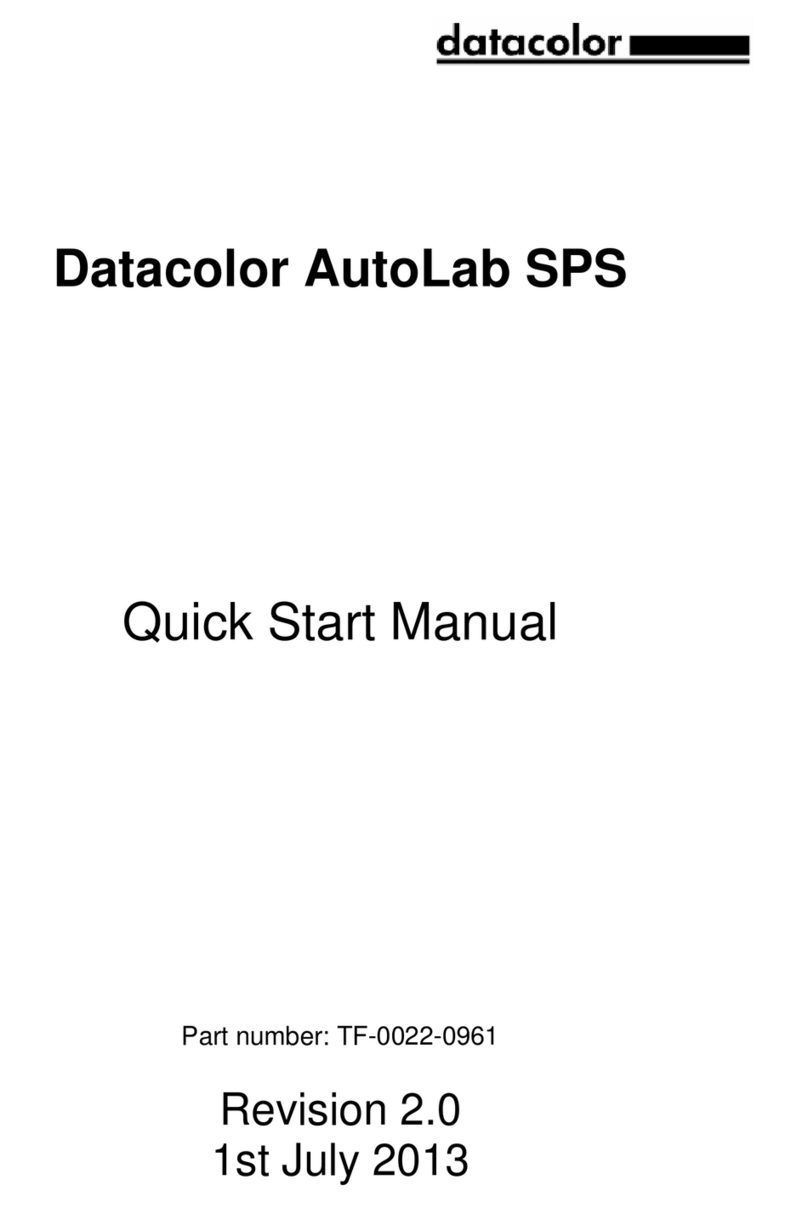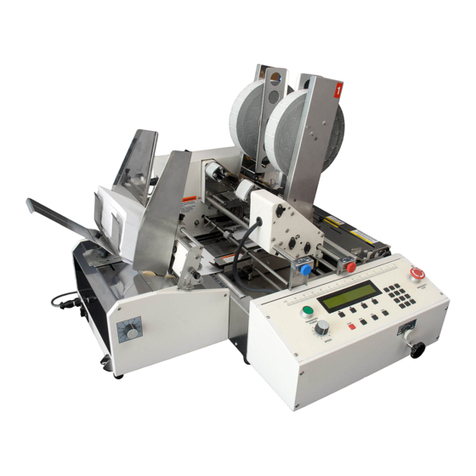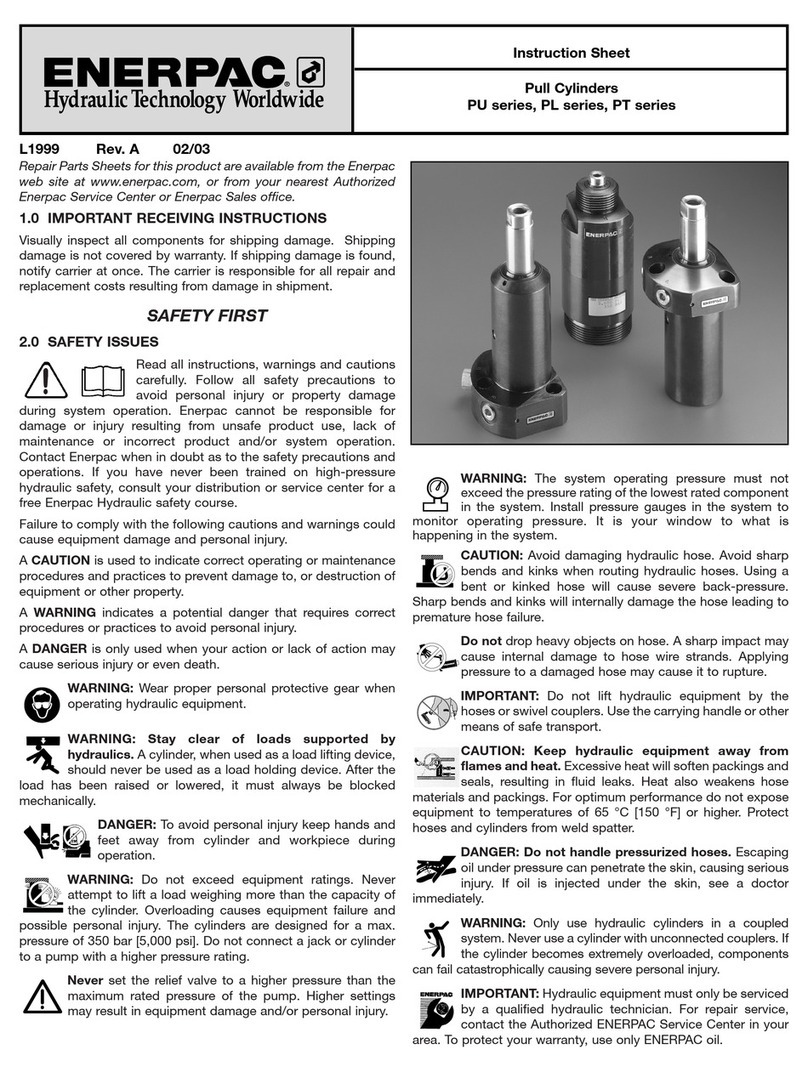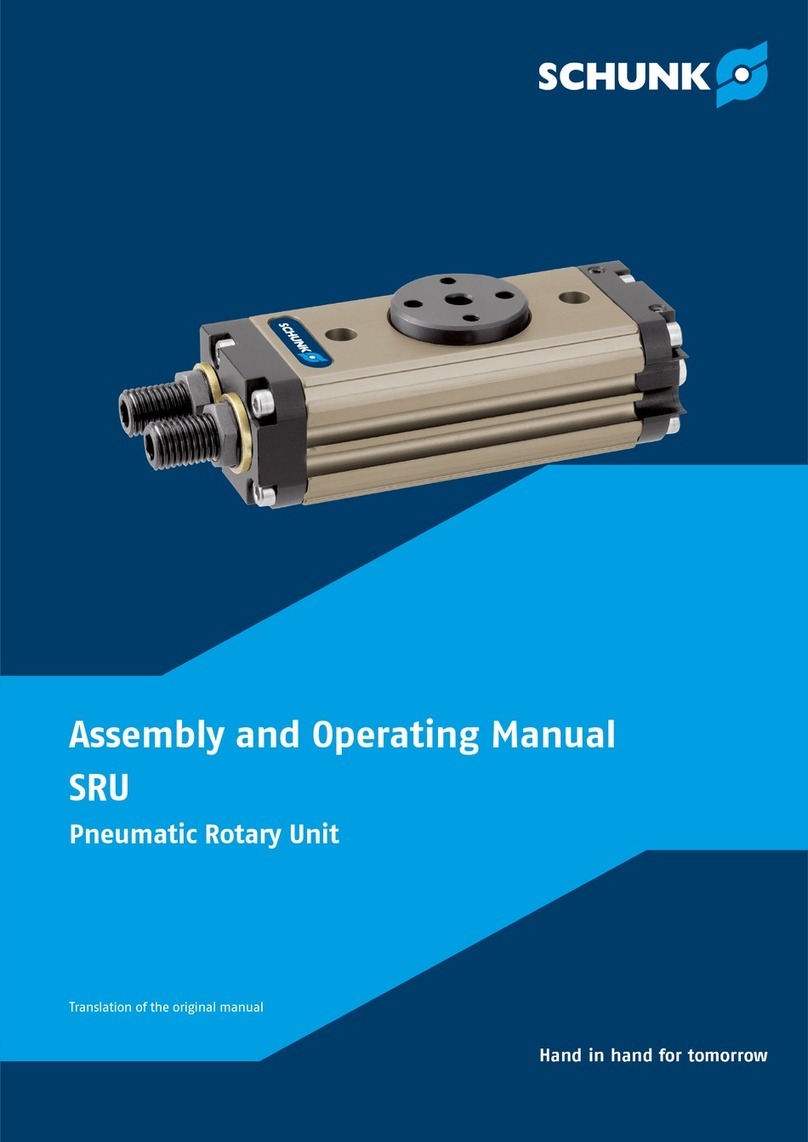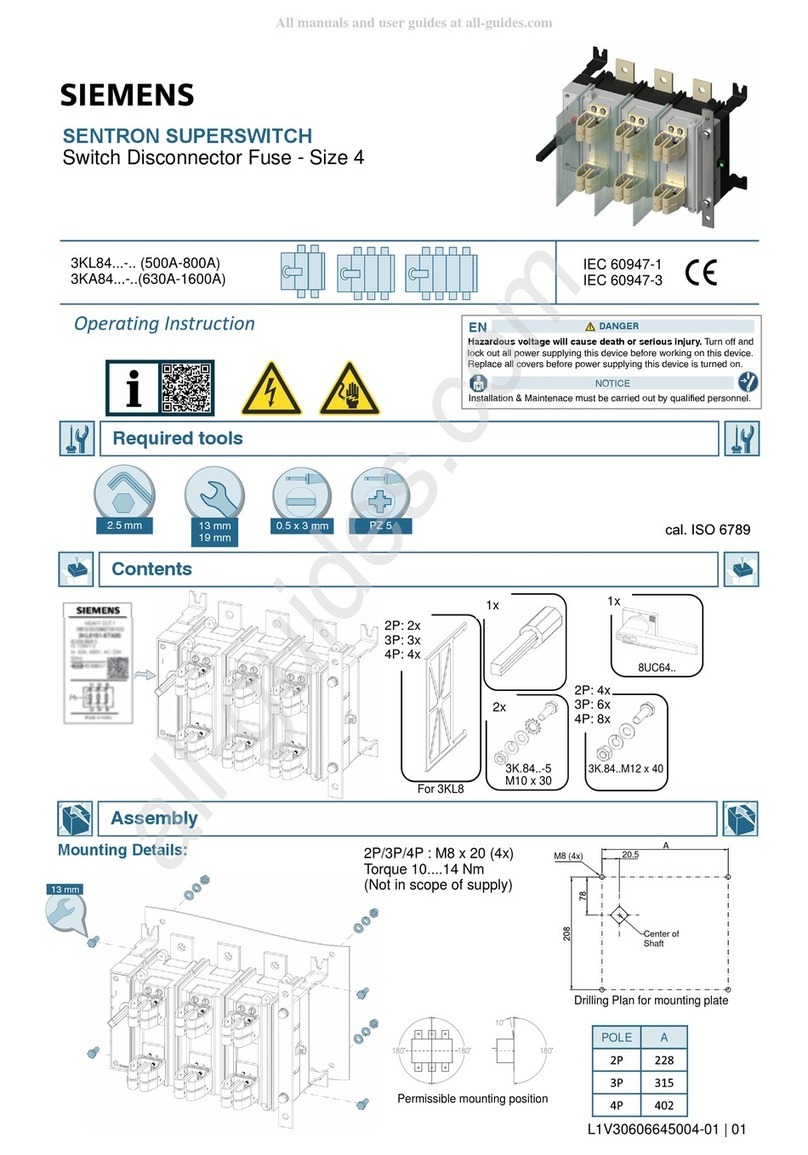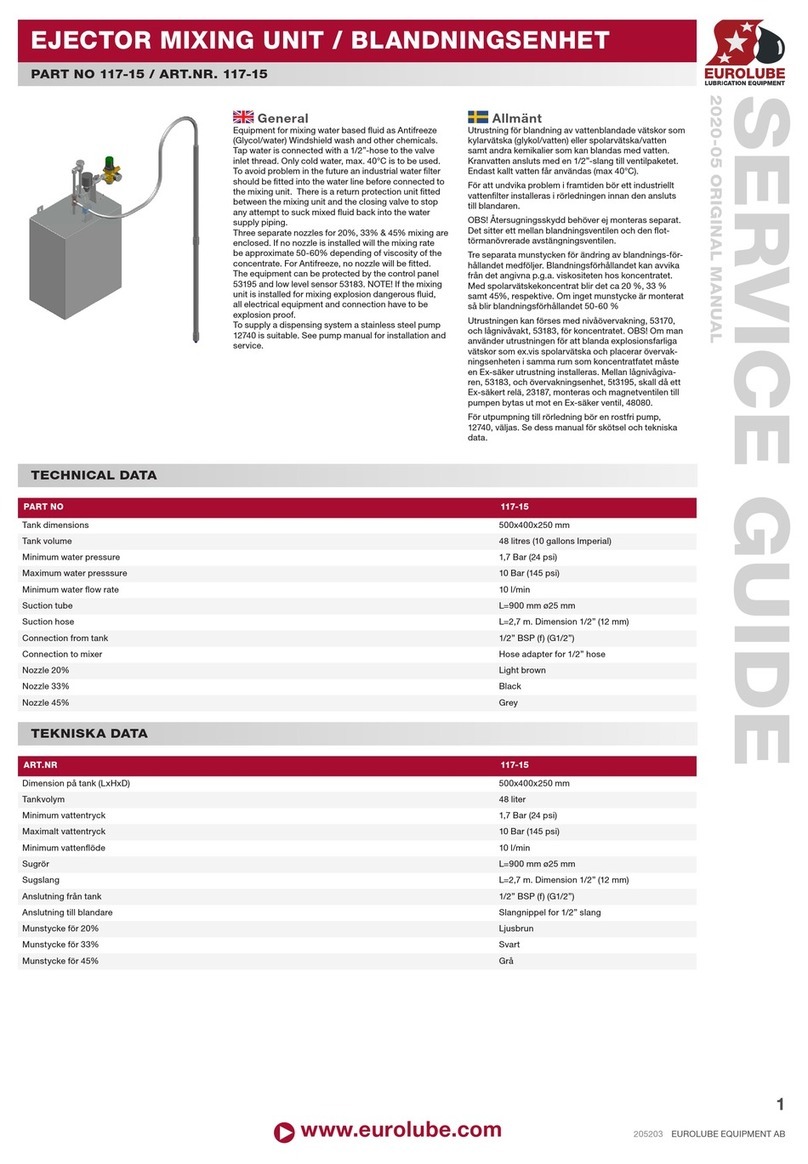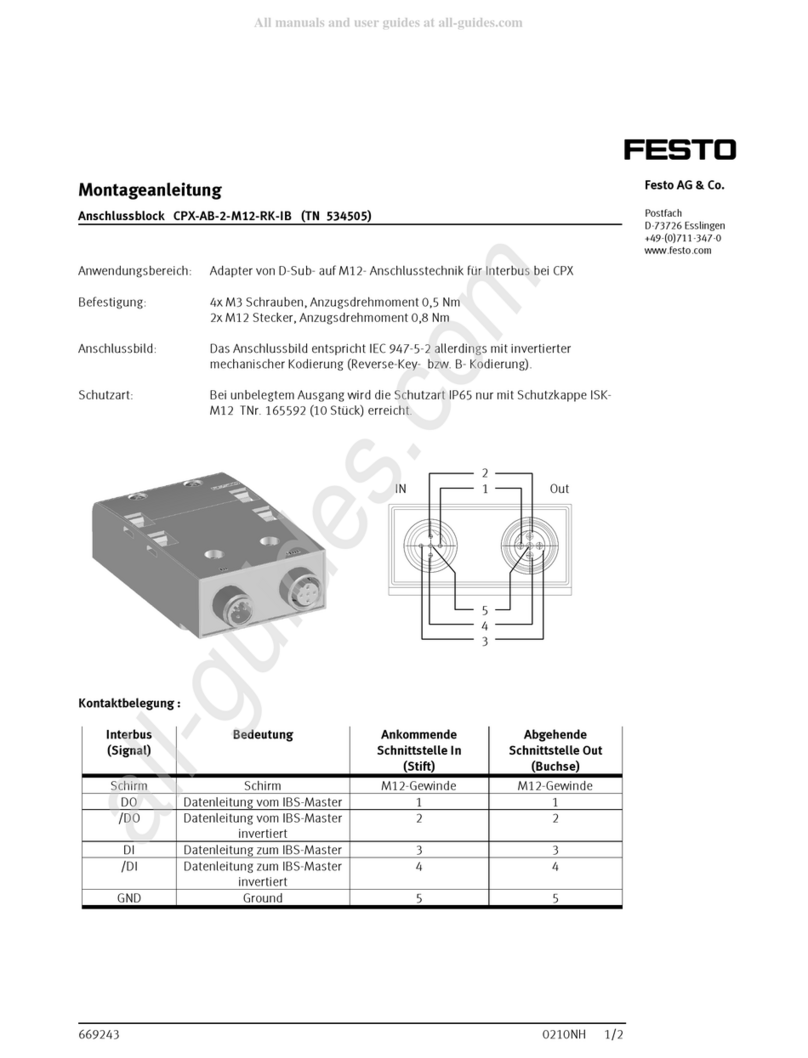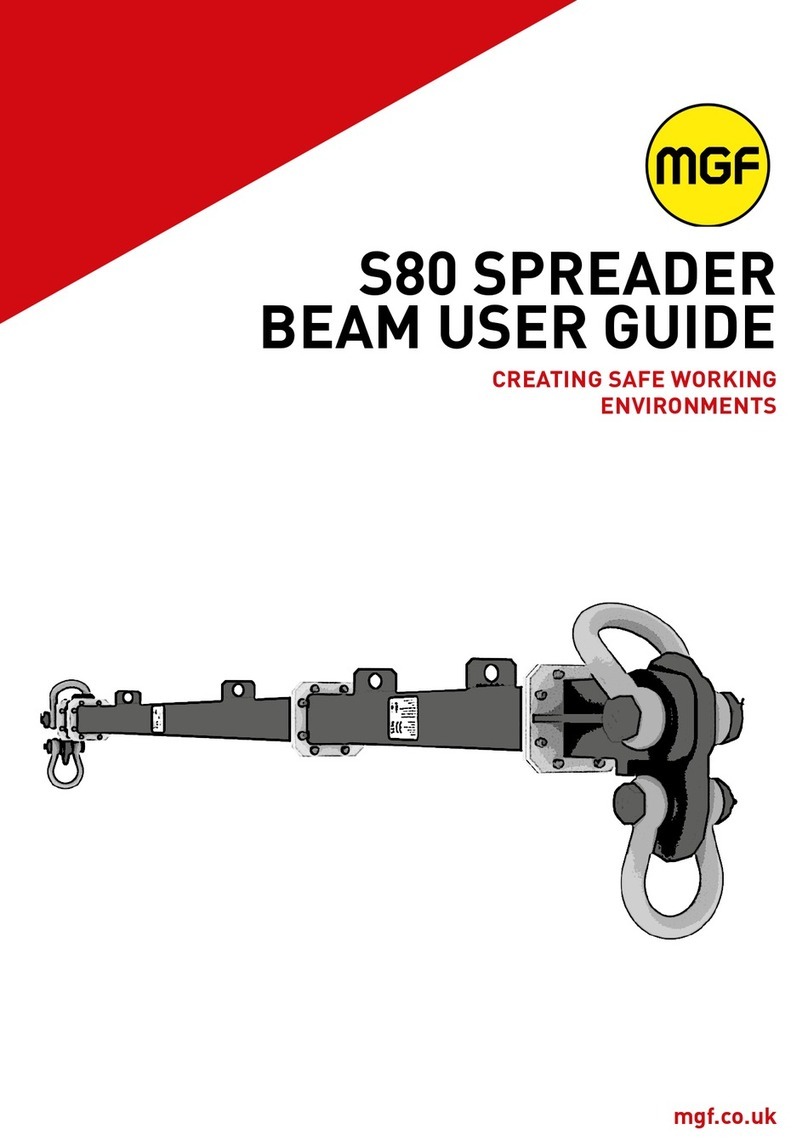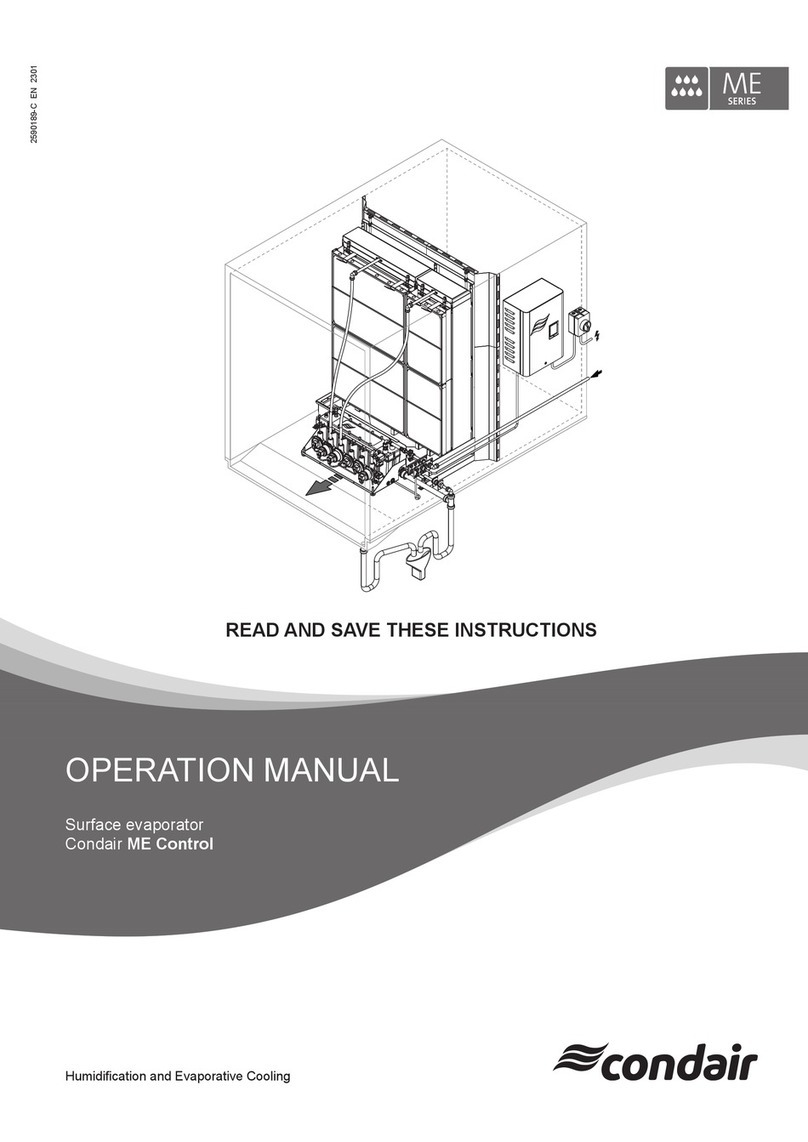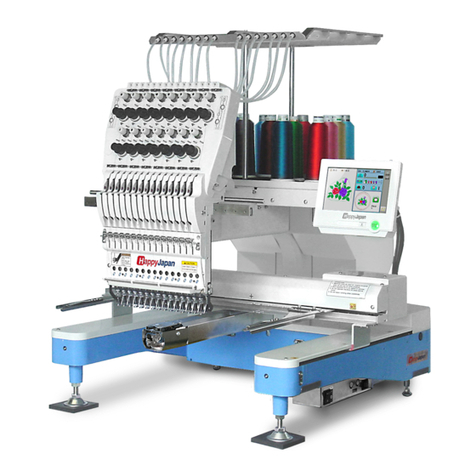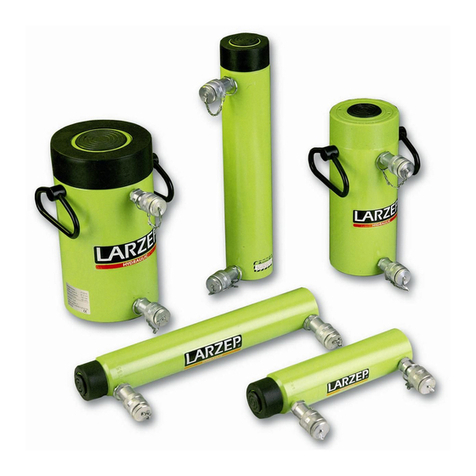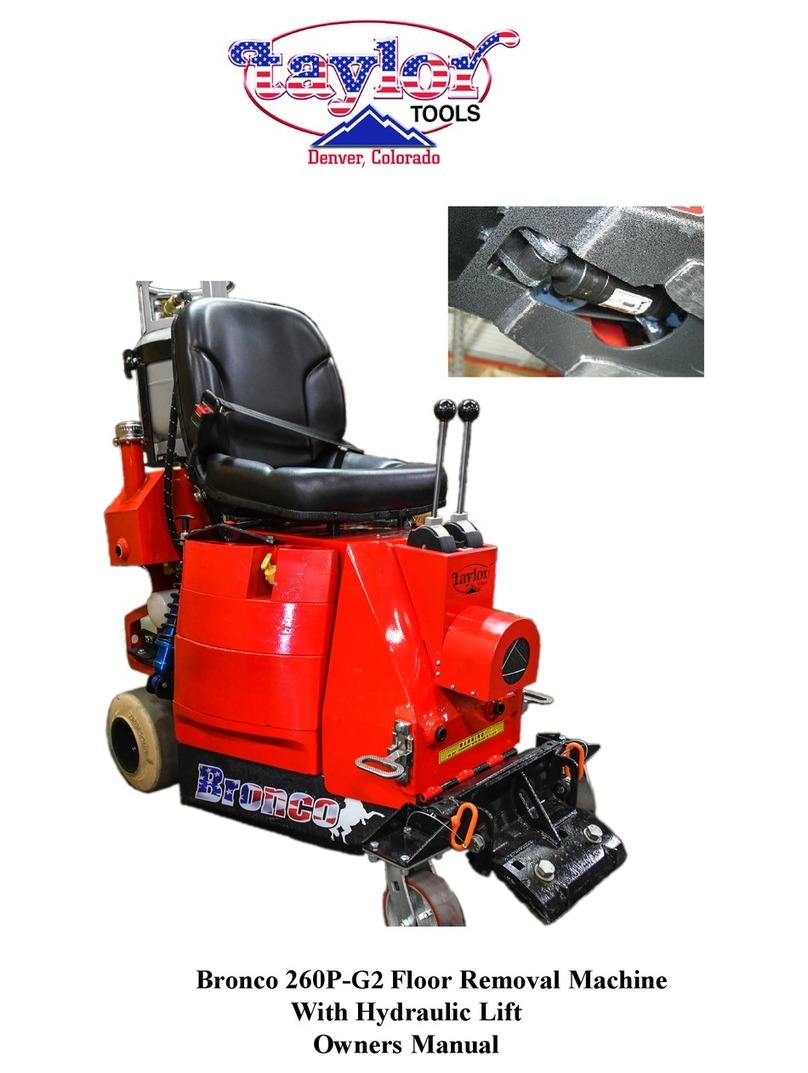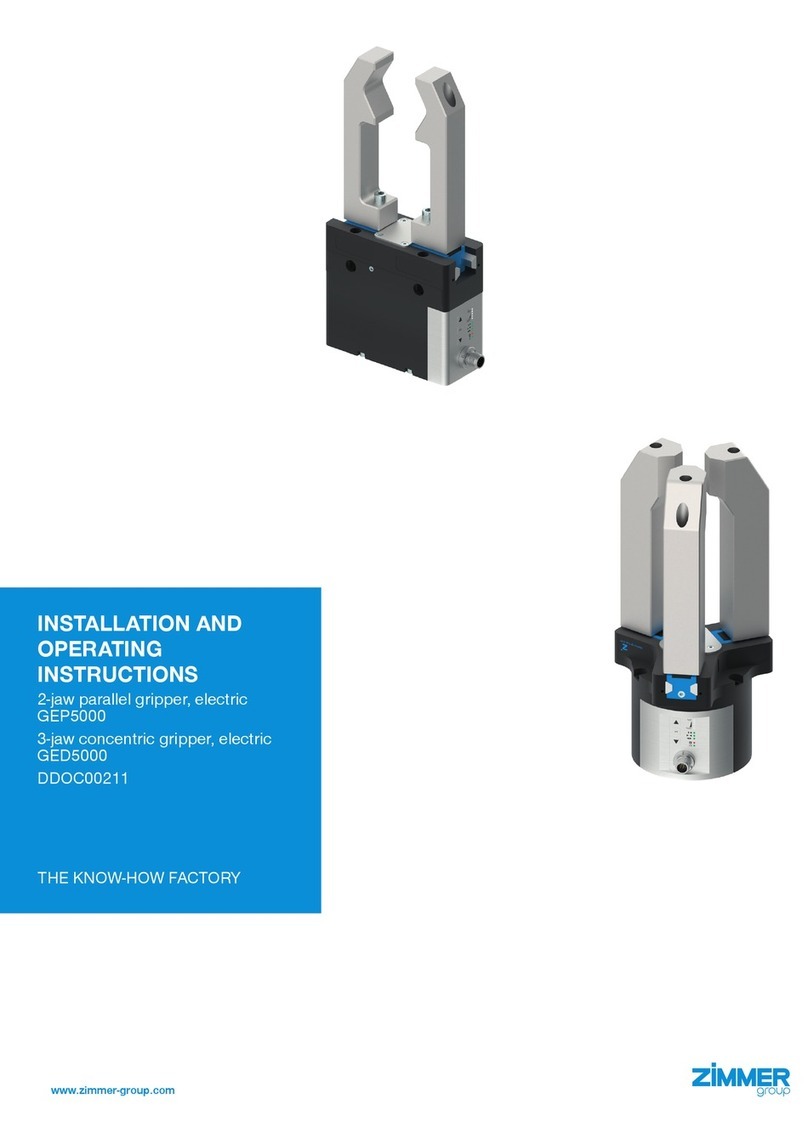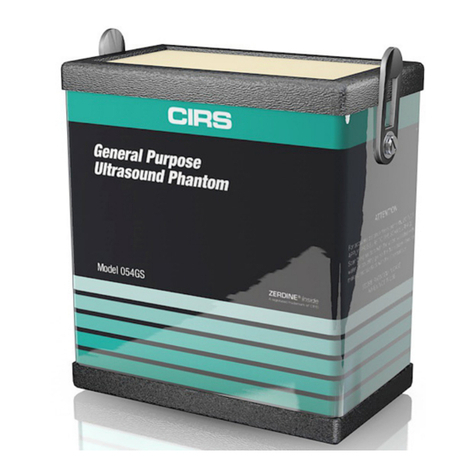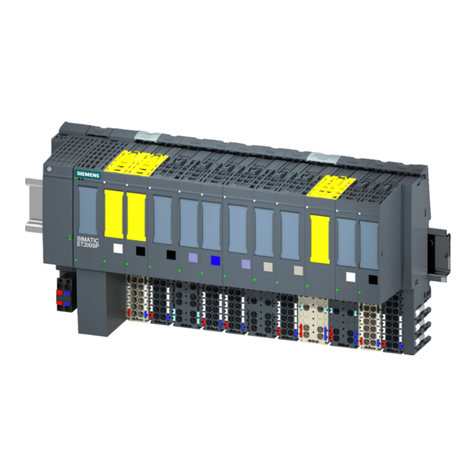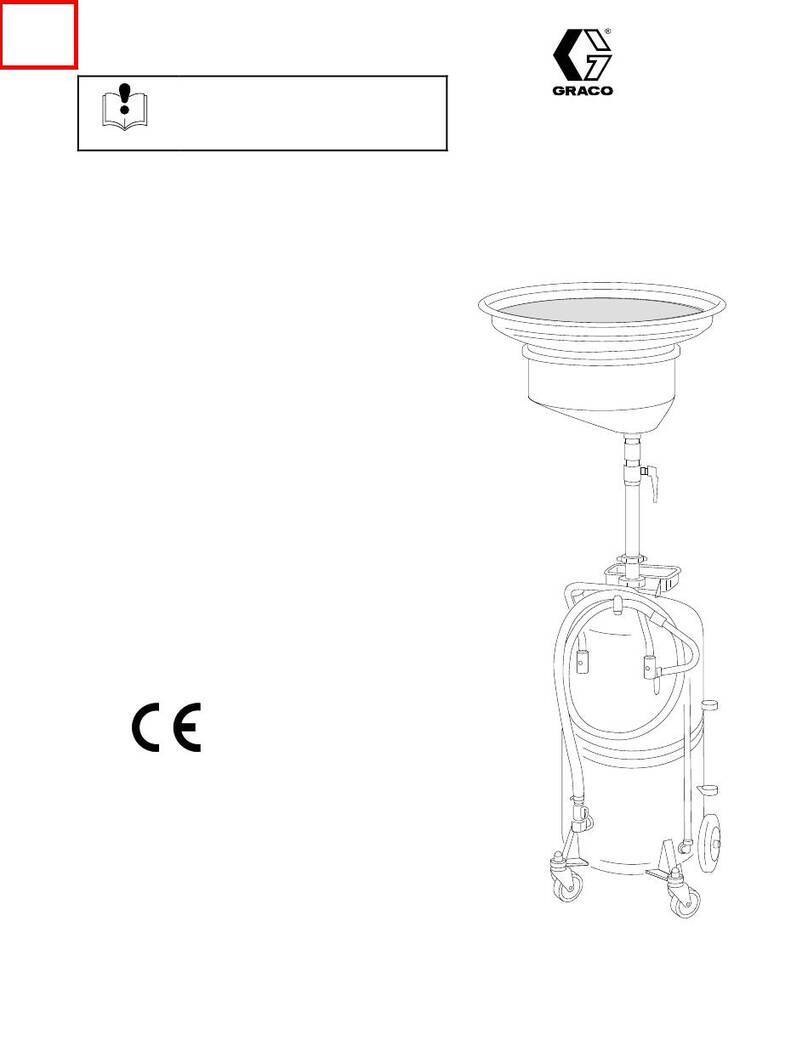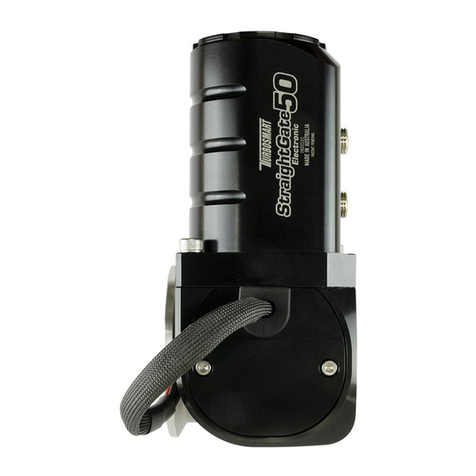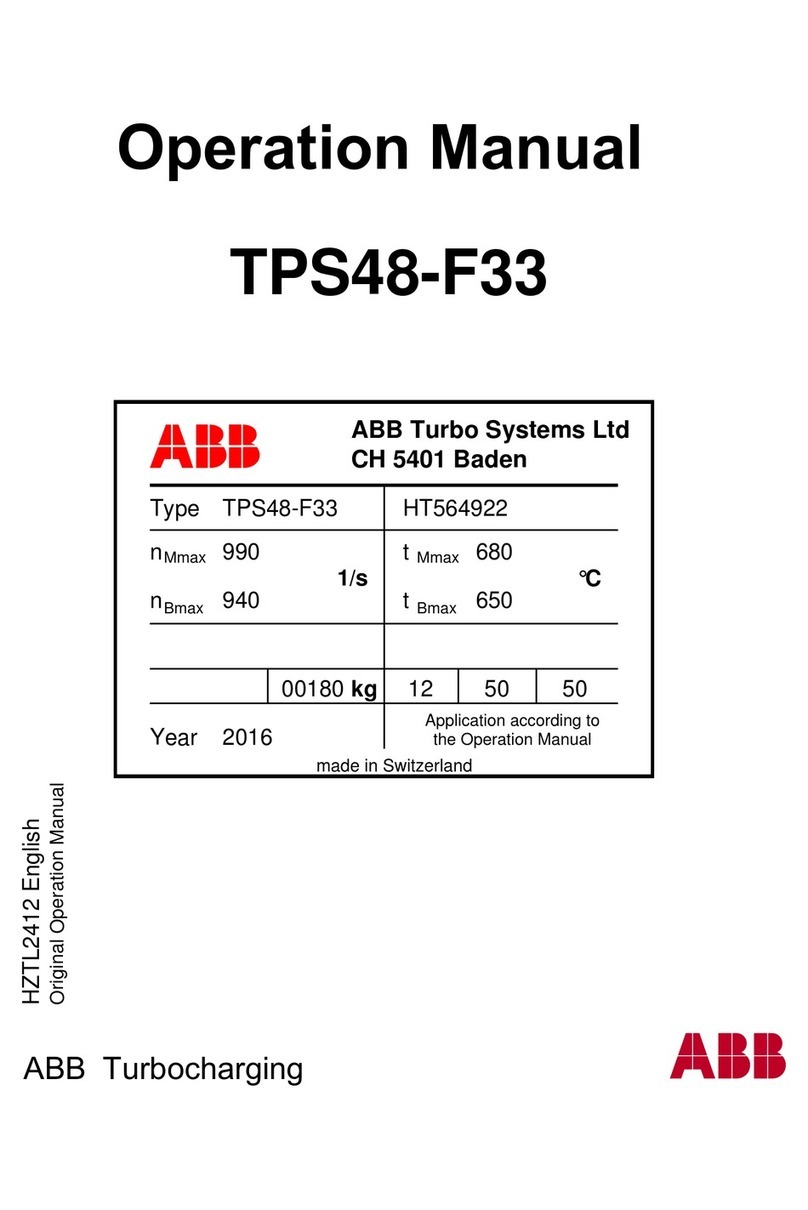Datacolor AHIBA IR User manual



Ahiba IR User’s Guide
(Part No.71-990225, June, 2010)
All efforts have been made to ensure the accuracy of the information presented in this format.
However, should any errors be detected, Datacolor appreciates your efforts to notify us of these
oversights.
Changes are periodically made to this information and are incorporated into forthcoming versions.
Datacolor reserves the right to make improvements and/or changes in the product(s) and/or
program(s) described in this material at any time.
© Datacolor. Datacolor, and other Datacolor product trademarks are the property of Datacolor.
Microsoft and Windows are either registered trademarks of Microsoft Corporation in the United
States and/or other countries.
To obtain information on local agents, contact either of the offices listed below, or visit our website at
www.datacolor.com/locations/.
Support Questions?
If you need help with aDatacolor product, please contact one of our top-rated technical support teams
located around the world for your convenience. You can find contact information below for the Datacolor
office in your area.
Americas
+1.800.982.6496 (toll-free)
NSASupport@datacolor.com
Europe
Asia Pacific
ASPSupp[email protected]
Or contact your local representative.
Datacolor has representatives in over 100 countries … for a complete list,
visit www.datacolor.com/locations/
Designed and Developed by:
DatacolorUSA
5PrincessRoad Lawrenceville, NJ
08648
Assembled at Datacolor Technology (Suzhou):
No. 288 Suhong Road,
Suzhou Industrial Park
Export Processing Zone B, Suzhou,
Jiangsu, P.R. China 215021
Committed to Excellence. Dedicated to Quali t y .
Certified to ISO 9001:2008 in Manufacturing Centers Worldwide.


Ahiba IR User's Guide Contents •i
Contents
Ahiba IR ....................................................................................................1
Overview........................................................................................................1
Features ........................................................................................................3
Accessories...................................................................................................4
Standard Accessories.............................................................................4
Optional Accessories..............................................................................4
About the Beakers.........................................................................................4
Safety Labels and Precautions......................................................................5
General Precautions...............................................................................6
Electrical/Environmental Precautions.....................................................6
Use Precautions.....................................................................................6
Maintenance Precautions.......................................................................7
Chemical Handling Precautions .............................................................7
Operating Principles......................................................................................7
Heating and Cooling Schematic.............................................................7
Beaker Rotation......................................................................................8
Equipment Controls and Indicators.......................................................9
Overview........................................................................................................9
Front of Unit............................................................................................9
Inside of Unit.........................................................................................10
Back of Unit..........................................................................................10
Controller..............................................................................................11
System Setup and Maintenance..................................................................11
System Location...................................................................................11
Power Connections......................................................................................12
Main Power Connection .......................................................................12
Controller Power Supply.......................................................................13
Beaker Preparation, Cleaning and Maintenance.........................................14
Beaker Installation................................................................................14
Beaker Dosing......................................................................................18
Beaker Preparation Basket...................................................................19
Beaker Cleaning and Maintenance ......................................................19

ii •Contents Ahiba IR User's Guide
Program Controls..................................................................................21
Overview......................................................................................................21
Controller and User Interface.......................................................................22
Display.........................................................................................................22
System Idle Screen..............................................................................22
Program Maintenance Screen..............................................................23
Data Entry Screen................................................................................23
Program Directory Screen....................................................................24
LED Process Indicators...............................................................................24
Numeric Keypad..........................................................................................25
Command Buttons.......................................................................................26
Programs ................................................................................................29
Overview......................................................................................................29
Limit Values.................................................................................................29
Storing a Program........................................................................................30
Editing a Program........................................................................................30
Deleting a Program......................................................................................31
Running a Program......................................................................................31
Program Hold...............................................................................................32
Hold Precautions and Tips...................................................................32
Manual Program Hold...........................................................................32
Alarms and Status Messages......................................................................33
Audible Alerts.......................................................................................33
Display Icons........................................................................................33
Troubleshooting Alerts and Alarms ......................................................34
Appendix.................................................................................................37
Specifications ..............................................................................................37
Minimum/Maximum Beaker Loads...............................................................38
Minimum/Maximum Beaker Loads...............................................................38
Minimum Beaker Load..........................................................................38
Maximum Beaker Load.........................................................................38
Maintenance List..........................................................................................39
Menu Flow...................................................................................................40
Accessories.................................................................................................41
Beaker Preparation Basket...................................................................41
Beaker Prep Basket..............................................................................41
Dosing Accessories..............................................................................42
Complete Accessories List..........................................................................43

Ahiba IR User's Guide Ahiba IR •1
Ahiba IR
Overvi ew
Ahiba IR is an infrared dyeing machine that handles a wide variety of processes
in exhaust dyeing laboratories. It can be used as an atmospheric or high-
temperature dyer. The unit can also be used to simulate wash fastness testing.

2•Ahiba IR Ahiba IR User's Guide
The Ahiba IR controller includes software that is used to program customized
temperature/time sequences. Microprocessor technology ensures that the
controller accurately follows the pre-defined dyeing curves.
The user interface employs a symbol-driven interface that removes all translation
obstacles that exist with text-driven interface designs. A numeric keypad
completes the data entry tools.

Ahiba IR User's Guide Ahiba IR •3
Features
•Heating Source:3 1000W infrared quartz lamps.
•Cooling Source:Fresh air pulled into the unit via a CFM blower.
Expelled through an exhaust channel on the back of the unit.
•Temperature Monitoring:Protects the equipment and samples from
overheating.
•Type of Fibers: All fibers
•Dyeing Positions:Accommodates up to 20 dyeing positions
•Types of Substrates:
Piece
Hank
Combed Slivers
Loose Material
•Liquor Ratio:
1:3 (Synthetics)
1:5 (Natural)
•Wash Fastness Testing. Unit can also be used to simulate wash
fastness testing.
•User Interface:Symbol-driven user interface. Maximum number of
custom programs stored is 99, each containing a maximum of 15 steps.

4•Ahiba IR Ahiba IR User's Guide
Accessories
Standard Accessories
The following accessories are included with the system:
•Hex screwdriver for tightening and loosening beaker tops
•Reference beaker
•Complete set of beakers. Note: If optional dosing beakers are ordered,
all necessary accessories to complete the dosing process will be
included.
•Replacement set of o-rings for beaker lids
•Spare bayonet sensor
•Printed user’s guide
Optional Accessories
Optional accessories for the Ahiba IR include the following:
•Beaker preparation basket
•Self-refilling dosing syringe
•Accessories for membrane dosing
•Accessories for injection dosing
These accessories can be ordered with the system, or ordered at a later time.
See also Appendix, Accessories List for details to order these accessories.
About the Beakers
The Ahiba IR can work with several different beaker sizes. A standard unit
includes a single set of beakers, and the beaker size is defined when the order
is placed. The table below summarizes this information:
Beaker Size
(Maximum)
Maximum Number of beakers
that can fit into the unit
Ideal Sample
Size
150 ml
20
5 grams
300 ml
15
10 grams
500 ml
8
25 grams
500 ml
10
25 grams
1000 ml
8
50 grams
5 liter
1
250 grams

Ahiba IR User's Guide Ahiba IR •5
INFORMATION
A unit can be equipped with either dosing or non-dosing beakers. Injection dosing
or membrane dosing beakers are available.
Units equipped with a 5L drum should limit the heating gradient input to 2.5°C/min,
this due to the mass of the beaker and to prevent “Temperature out of Range” errors.
A unit fitted with either dosing option will include all accessories required to
accomplish the dosing (e.g. 10cc self-refilling dosing syringe, dosing adapter or
needle pack).
The ideal sample size is based on 10:1 liquor ratio. The maximum fill volume of the
beaker should be limited to less than 2/3 of the total beaker volume, to achieve
maximum agitation of the sample and dyebath inside the beaker.
The number of beakers supplied is based on the number of dyeing positions ordered
with the unit.
See also Appendix, Optional Accessories in this guide for a complete list of optional
accessories.
Safety Labels and Precautions
The following symbols are found on the equipment and in the documentation:
Do Not Touch
Surface is Hot. There is a danger of burn injuries in
the operation of this unit.
High Voltage
Hot Air Exhaust
Stop. Warning that a specific action is prohibited.
CAUTION. When this appears in the documentation,
it indicates that the step to be performed requires
precautions.

6•Ahiba IR Ahiba IR User's Guide
INFORMATION. Indicates there is additional
information relevant to the topic..
The precautions below should always be considered during the unit assembly,
operation and maintenance.
General Precautions
•The equipment shall only be operated as instructed in this guide. If
equipment is used in a manner other than that specified in this
document, the protection provided by this instrument may be impaired.
•Read this user’s guide carefully before placing the unit in service.
•This unit weighs 73kg. Any movement or relocation of the unit requires
a minimum of four persons.
Electrical/Environmental Precautions
•To prevent an electrical shock or fire, be sure to use the power cord
supplied by Datacolor.
•The power cord must be plugged into an outlet with a protective
grounding terminal. Do not invalidate protection by using an extension
cord without protective grounding.
CAUTION
Turn main power switch to OFF and remove the power cord from the
electrical outlet before any internal service work is done.
Use Precautions
•Unit is to be used only as laboratory dyeing equipment.
•Continue operating only as long as the unit functions properly.
•Units equipped with a 5L drum should limit the heating gradient input to
2.5°C/min, this due to the mass of the beaker and to prevent
“Temperature out of Range” errors.
•Certain internal parts may reach a temperature greater than
50°C/122°F. Unit can only be operated when the door is closed.
CAUTION
When door is opened, internal parts should only be handled after the
unit has cooled to 50° C.

Ahiba IR User's Guide Ahiba IR •7
Maintenance Precautions
•Unit should be operated, maintained and repaired only by authorized,
trained personnel.
•Careful cleaning of the unit enhances the reliability and extends the life
of the equipment.
Chemical Handling Precautions
•Always observe the standards and regulations applicable to the
chemicals being used.
•Datacolor assumes no responsibility for the handling of chemicals.
Operating Principles
Ahiba IR consists of a rotating wheel that accommodates a maximum of 20
beakers. The unit employs a radiant infra-red heating technology to heat the
liquor in the beakers, and uses an air-cooling system. This design reduces
energy consumption while providing temperature control and accuracy.
Heating and Cooling Schematic
•Three (3) high-performance infrared lamps are used to heat the
beakers. They are mounted at the top of the unit. The heat is
transferred from the beaker to the dyebath liquor.
•The design of the beakers ensures accurate beaker-to-beaker
temperatures.
•A reference beaker fitted with a temperature sensor is used to measure
the dyebath temperature. The actual temperature is reported to the
controller via a rotary switch.
•A high CFM blower fan is used to draw fresh air into the chamber, to
cool the beakers. The hot air is released through an exhaust channel

8•Ahiba IR Ahiba IR User's Guide
at the back of the unit. The fan is cycled on and off as needed to
regulate the temperature.
•A multiple back-up safety system monitors the temperature and
protects the equipment and samples from overheating.
Beaker Rotation
•Rotation Speed: 5 – 50 rpm (variable)
•Beaker Movement: Automatically reverses wheel direction every
minute

Ahiba IR User's Guide Equipment Controls and Indicators •9
Equipment Controls and
Indicators
Overvi ew
This section itemizes all of the controls and indicators included on the Ahiba IR.
Front of Unit
Controller
Keypad
Transparent glass
panel with
protective shield
Insulated
Cabinet
Door Latch

10 •Equipment Controls and Indicators Ahiba IR User's Guide
Inside of Unit
Back of Unit
Exhaust Fan
Main Switch
Thermostat Reset
Power Cord
Door Closed
Sensor
Bayonet
Sensor
Beaker
Wheel
D y e i n g
Beaker
Infrared
Lamps (3)

Ahiba IR User's Guide Equipment Controls and Indicators •11
Controller
System Setup and Maintenance
The steps required to prepare the unit for operation include:
•Select a location
•Mount the controller to the machine (hardware provided)
•Connect main communication cable to the controller
•Connect unit to power source
•Beaker installation
System Location
The Ahiba IR should be placed on a stable, level
table. The table should have sufficient height to allow
for easy opening and closing of the door, and easy
viewing of the controller.
CAUTION
There should be a minimum of 6 inches (152mm) between the back of the unit
and the wall or any other obstacles, for proper venting of exhaust port.
LED Status
Panel
Numeric Keypad
Command
Buttons
Viewing Angle Adjustment Knobs

12 •Equipment Controls and Indicators Ahiba IR User's Guide
Power Connections
The controller and the Ahiba IR unit have separate power controls.
Main Power Connection
You must connect the power cord to the unit, and to an electrical outlet.
CAUTION
The power connection should be made by a certified electrician.
INFORMATION
Prior to connecting the Ahiba IR unit, ensure that the local line voltage agrees
with the line voltage specified on the name plate. See also Main Power Supply
Connection below for schematics.
The Ahiba IR requires a proper earth ground.
Power Cord

Ahiba IR User's Guide Equipment Controls and Indicators •13
Main Power Supply Connection
Below are the power connections that can be used.
230V AC standard mains (e.g., Europe)
230V AC, 1N/PE, 50/60 Hz, 3850 W; Fuse: 15 A
230V AC high power mains (e.g., US, Canada, Japan)
230V AC, 2/PE, 50/60 Hz, 3850 W; Fuse: 15 A
Controller Power Supply
The Ahiba IR controller is powered separately from the machine. Before turning
the controller on, check that the power connection from the main power cord is
completed and checked for correct voltage levels. When you have verified the
connection:
1. Turn on the main power switch located on the back of unit.
2. Locate the controller power switch on the rear of the controller box:
3. Press the top of the button to activate the controller. Press the bottom of
the button to cut the power to the controller.

14 •Equipment Controls and Indicators Ahiba IR User's Guide
Beaker Preparation, Cleaning and Maintenance
Beaker Installation
The beaker wheel is fitted with a simple mechanical latching system to lock the
beakers in place on the wheel. Beaker installation includes the following steps:
•Secure beaker lids. This is done each time a dyeing process is run.
•Install beakers
•Install/connect reference beaker
All of the steps described below must be performed for each dyeing cycle.
Securing the Beaker Lids
Before the beakers are attached to the wheel, the lids must be secured using the
hexscrewdriver supplied with the unit. To secure the lids:
1. Ensure beaker lid and beaker flange are a smooth and even seal.
Other manuals for AHIBA IR
1
Table of contents
Other Datacolor Industrial Equipment manuals
